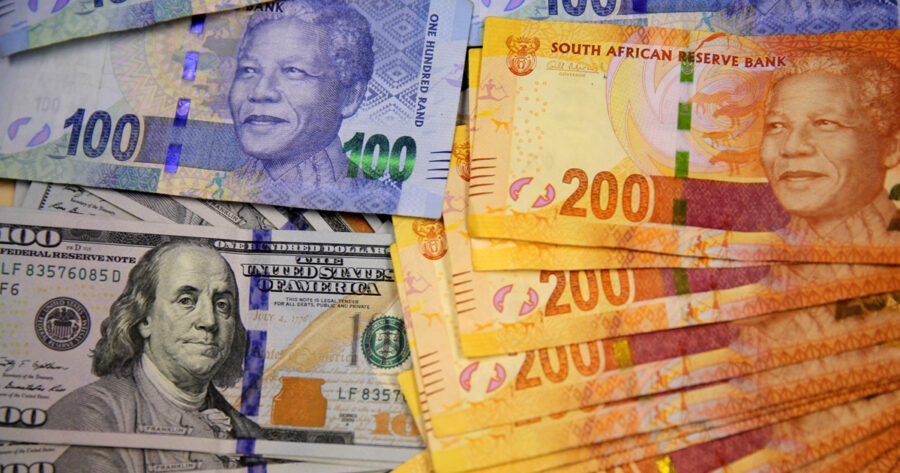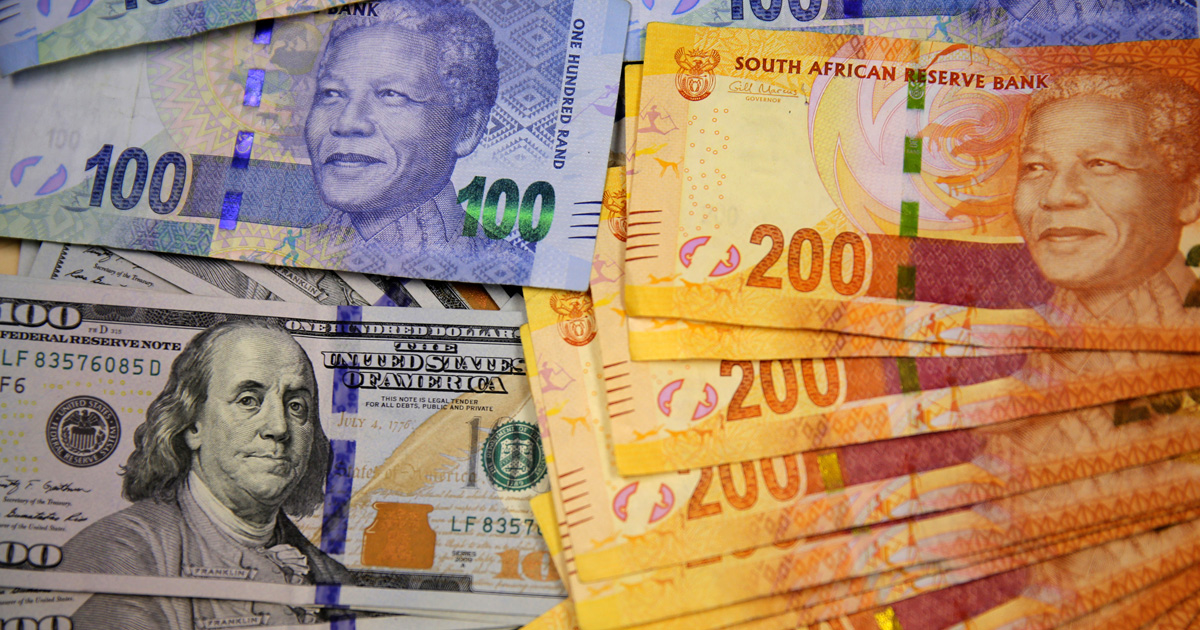
Dollar charged toward a 12-week winning streak
The dollar charged toward a 12-week winning streak on Friday, though it remained mostly rangebound as markets looked to U.S. nonfarm payrolls data later in the day for clues on whether the Federal Reserve’s hawkish messaging on rates will need tweaking.

Reuters: The dollar charged toward a 12-week winning streak on Friday, though it remained mostly rangebound as markets looked to U.S. nonfarm payrolls data later in the day for clues on whether the Federal Reserve’s hawkish messaging on rates will need tweaking.
U.S. DOLLAR CHARGED TOWARDS A NEW HIGH
The dollar index, which earlier in the week hit a roughly 11-month high of 107.34, last settled at 106.43, but remained on track for 12 straight weeks of gains. The last time it clocked such a milestone was in 2014.
Against the euro, the greenback was similarly headed for a record winning run of 12 successive weeks. The single currency was last 0.07% lower at $1.0541. Friday’s closely-watched U.S. jobs report comes on the heels of a run of resilient economic data which has reinforced the Fed’s rhetoric of higher-for-longer rates and sent the greenback and U.S. Treasury yields surging.
“There’s an element here of just taking stock ahead of what should be a very important data release,” said Rodrigo Catril, senior FX strategist at National Australia Bank. “We’ve got to be mindful that at the moment, U.S. Treasury yields and the dollar, in particular, have been very reactive to positive data releases coming from the U.S., and therefore there’s potential for fireworks tonight.”
ALSO READ: Fuel price UPDATE: GOOD signs for petrol, diesel in November 2023
A broad selloff in world government bonds also stabilised on Friday, with the 30-year U.S. Treasury yield last at 4.8836%, after spiking above 5% for the first time since 2007 earlier in the week. Bond yields move inversely to prices. The benchmark 10-year Treasury yield last stood at 4.7151%, while the two-year yield steadied at 5.0244%.
The pause in the dollar’s rally on Friday provided a much-needed reprieve for the yen, which last bought 148.73 per dollar. Its sudden-but-brief spike of about 2% to 147.30 per dollar on Tuesday stoked speculation that Japanese authorities could have intervened in the currency market to shore up the battered yen, though data from the Bank of Japan seemed to suggest otherwise.
“Whether the BOJ and/or Ministry of Finance will intervene at distinct levels, will continue to be a tease, contingent on broader currency markets and momentum,” said Vishnu Varathan, head of economics and strategy at Mizuho Bank. “Currency traders may tease out thresholds, but should be warned to do so only cautiously.” Elsewhere, sterling dipped 0.09% to $1.21805 and was headed for five straight weeks of losses, struggling against a dominant dollar.
“The backdrop remains one in which the Fed is sticking its hawkish neck out much further than the European Central Bank, Bank of England, Reserve Bank of Australia and the BOJ,” said Thierry Wizman, Macquarie’s global FX and interest rates strategist. The Australian dollar fell 0.02% to $0.6369, while the New Zealand dollar slipped 0.04% to $0.59605, after both Antipodean currencies tumbled earlier in the week on the back of their respective central bank decisions.
ALSO READ: Who is the richest person in the world today? Top 10 list – 6 October 2023
The RBA on Tuesday held interest rates steady for a fourth month, with the Reserve Bank of New Zealand following suit a day after, both in line with expectations, though their messaging came in less hawkish than expected. The Aussie was eyeing a weekly drop of more than 1%, while the kiwi was headed for a more than 0.6% fall.
BRITISH POUND
Reuters: The British pound dipped against the U.S. dollar and the euro on Thursday after data showed the biggest slump in UK construction activity since 2020, while a Bank of England survey showed British firms see prices rising more slowly. The S&P Global/CIPS UK construction Purchasing Managers’ Index tumbled to 45.0 in September from August’s 50.8, its lowest since May 2020, when COVID-19 pandemic restrictions were in full force. The figure was well below the 50 level that separates contraction from expansion.
Economists polled by Reuters had forecast a much more modest decline to 49.9. “The construction data wasn’t particularly pretty but the sector is a relatively small part of the UK economy,” said Michael Brown, analyst at TraderX. “The key takeaway is that all the PMI surveys are below 50, still implying contraction,” Brown added.
The all-sector PMI – which includes services, manufacturing and construction – stood at 48.2 in September, its lowest level since January 2021. By 0918 GMT, the pound was at 86.68 pence per euro, down around 0.1%. Sterling was also down about 0.1% against the dollar at $1.2125, holding just above Wednesday’s 6-1/2 month low of $1.20385.
ALSO READ: Elon Musk’s X strips headlines from news links
The pound has struggled against the dollar recently as a more robust U.S. economy has prompted investors to bet that U.S. interest rates could rise further, while the Bank of England looks to be at, or near, the end of its tightening cycle. “Slowing momentum in activity, the recent decline in employment, and the sharp falls in core CPI and services inflation in August are clear signs that higher interest rates are weighing more heavily on the economy,” Capital Economics UK economist Ashley Webb said in a note.
“That said, we still suspect that wage growth and services inflation will fall only slowly,” Webb added, noting that Capital Economics expects the Bank of England to hold interest rates at the current level of 5.25% until late 2024. Money market traders are pricing around a 30% chance that the central bank will raise its Bank Rate by 25 basis points at the November meeting, but that would likely be the final hike of the tightening cycle.
Still, that is far below pricing from three months ago when traders were expecting interest rates to peak above 6% by the middle of next year. Meanwhile, the Bank of England’s closely-watched Decision Maker Panel survey showed British companies over the last three months cut expectations for selling price increases but forecast wage growth staying high.
SOUTH AFRICAN RAND
Reuters: The South African rand fell on Thursday as analysts rued the weakness of the local currency and markets wait for direction from U.S. employment data on Friday. At 1140 GMT, the rand traded at 19.5700 against the dollar, over 1% weaker than its previous close. The dollar last traded around 0.08% weaker against a basket of global currencies.
“Given South Africa’s heightened fiscal risks and deteriorating economic fundamentals, the ZAR lacks resilience against the broader ebb and flow of market sentiment,” Danny Greeff, co-head of Africa at ETM Analytics told Reuters. “The U.S. employment data scheduled for release tomorrow will likely determine its directionality into the new week,” Greeff said.
ALSO READ: Another bailout? SA Post Office is losing MONEY hand over fist
The rand has already lost over 3% against the greenback this month and about 13% this year, but central bank Governor Lesetja Kganyago said on Thursday that the bank would not step in to protect the local currency. “It’s a futile exercise trying to defend the exchange rate,” Kganyago said during a webinar, adding that the rand was caught up in a realignment of global currencies.
Like other risk-sensitive currencies, the rand often takes cues from international factors such as dollar moves and U.S. economic data in the absence of major local data points. On the Johannesburg Stock Exchange, the blue-chip Top-40 index last traded about 0.6% higher. South Africa’s benchmark 2030 government bond was stronger, with the yield down 7 basis points to 11.015%.
GLOBAL MARKETS
Reuters: A lull in bond selling has stretched into Friday, but may not last the day as investors waited on U.S. jobs data that could add to the case for keeping interest rates high for some time. Oil’s flip from surging to sliding has also provided respite, with Brent crude futures at $84.50 a barrel, some $13 or 13.5% cheaper than last week’s 11-month high.MSCI’s broadest index of Asia-Pacific shares outside Japan rose 0.9%. Tokyo’s Nikkei was flat and currency markets were similarly steady, though the bond rout has the dollar headed for a record 12th straight week of gains.
Ten-year U.S. Treasury yields were mercifully steady at 4.72% through the Asia session, but have climbed 55 basis points in a five-week-long selloff that has dragged on bond markets and appetite for risk-taking around the world.”The recent sharp sell-off has the paradoxical power to sow the seeds of its own reversal,” said analysts at Rabobank, since tighter financial conditions will weigh on demand, and increase the likelihood that policy rates are peaking and not pausing.
ALSO READ: Newspaper front pages from around the world, 6 October 2023
Nobody was placing big bets, however, before the publication of U.S. non-farm payrolls data at 1230 GMT. Economists polled by Reuters’ expect it to show 170,000 U.S. jobs were added last month, though estimates range as high as 256,000. “It’s hard to disentangle where people are sitting, but the market won’t want to see a strong number for sure,” said Jason Wong, strategist at BNZ in Wellington.
Another round of bond selling would likely propel the dollar further along a weekly winning streak that is already its longest ever against the euro. The dollar index is up 12 weeks in a row, equalling a streak that ran from July to October 2014. The run-up has the euro, at $1.0542, pinned near an 11-month low and sterling not far from a seven-month trough. The dollar index was steady on Friday at 106.4.
“A push through 107 would provide technical evidence of trend continuation,” said Capital.com analyst Kyle Rodda. Surprisingly, only the beleaguered yen has showed much of a fight, since a sudden jump in the Japanese currency during London afternoon on Tuesday stoked speculation authorities had intervened. Japanese money-market data showed no anomalies of a kind that might have accompanied intervention. But the move was eye-catching enough to keep traders on their guard.
The yen was last steady at 148.5 per dollar. Gold was also steady at $1,822 an ounce after nine days of losses driven by rising global bond yields. “This may be just a brief pause while we wait for labour market data and next week’s U.S. Treasury supply and CPI data,” said SocGen strategist Kit Juckes. “If the labour market data are strong, pressure will return sooner than it did last year. I still think the Treasury market will take yields higher until something breaks in the system.”
ALSO READ: The SA Rand is tanking against the US Dollar: Here’s WHY
Published by the Mercury Team on 6 October 2023
For more news on global and local market performance, follow our business and finance page.
